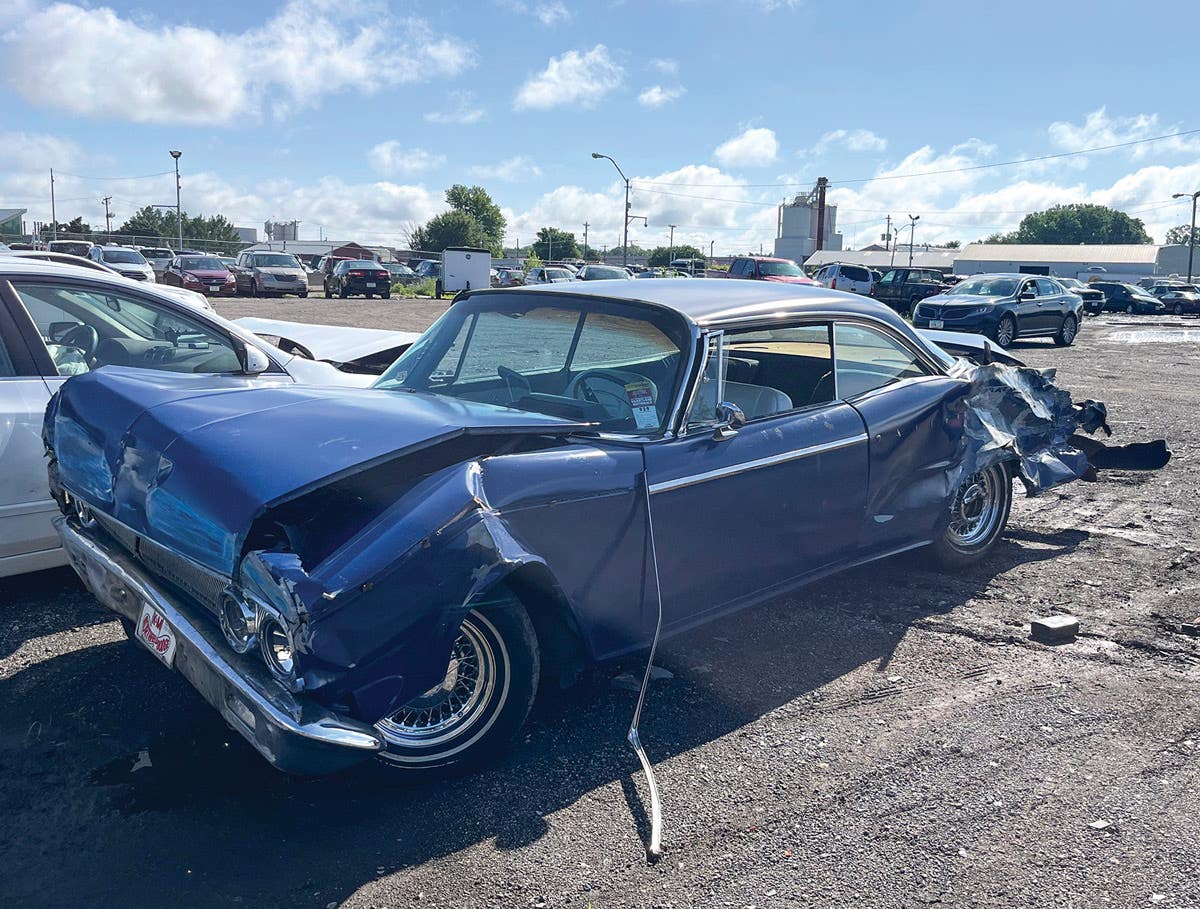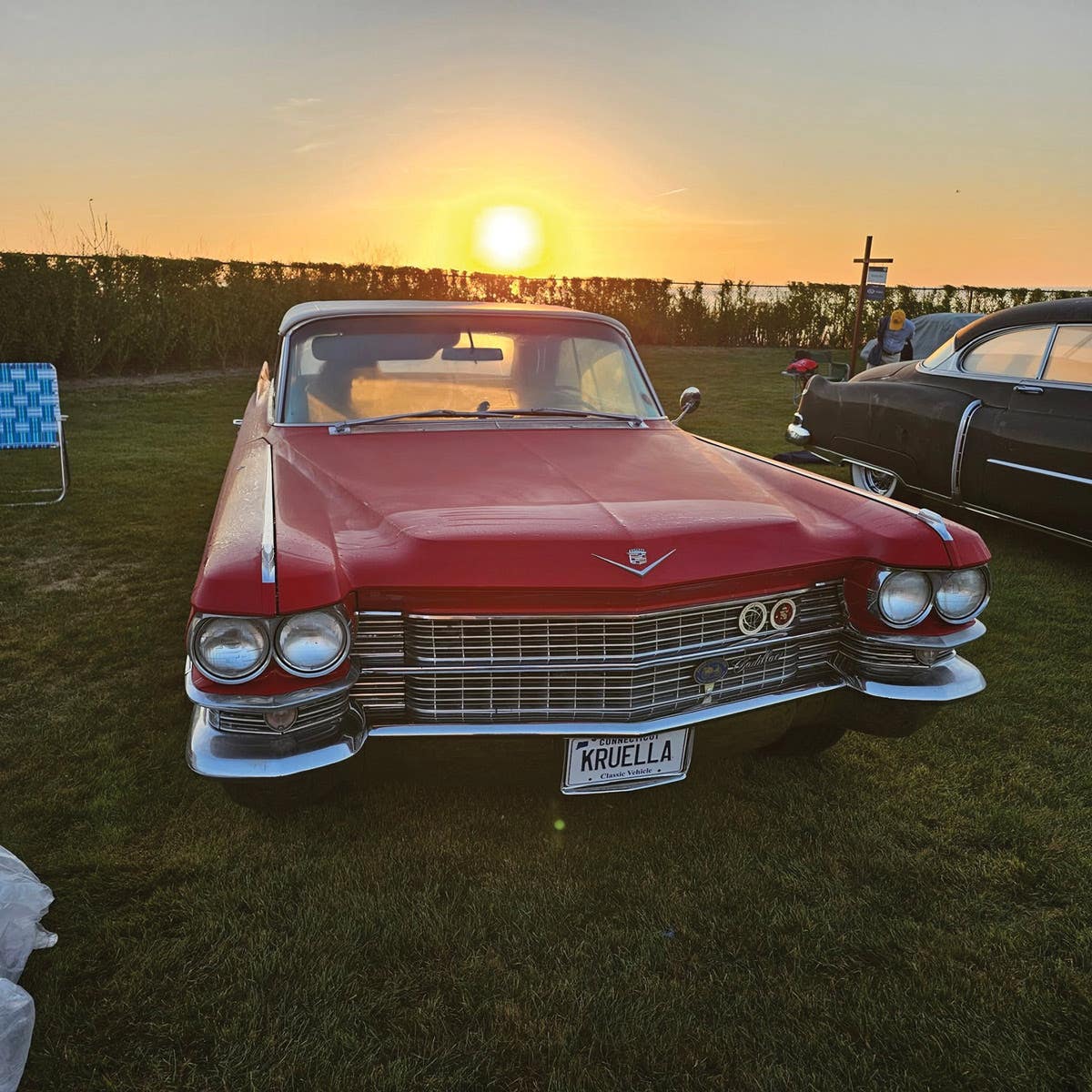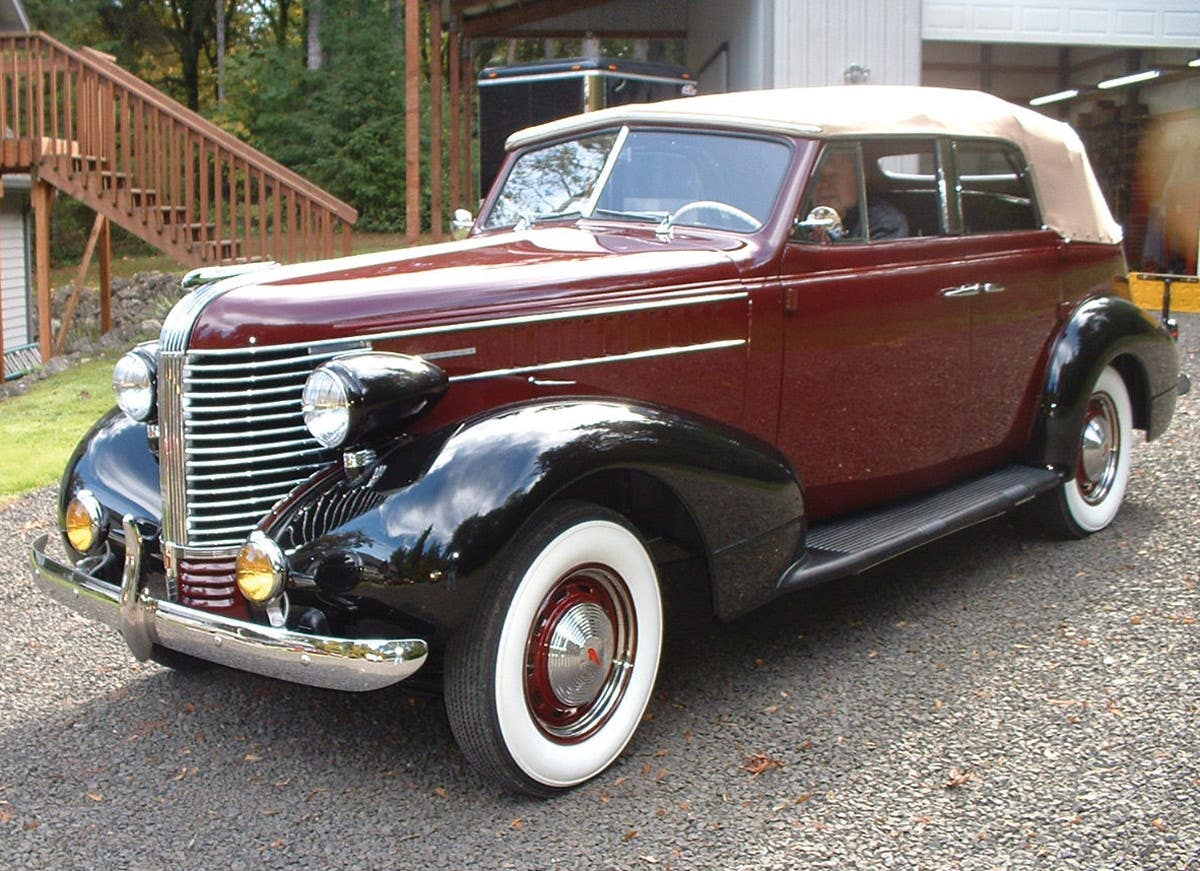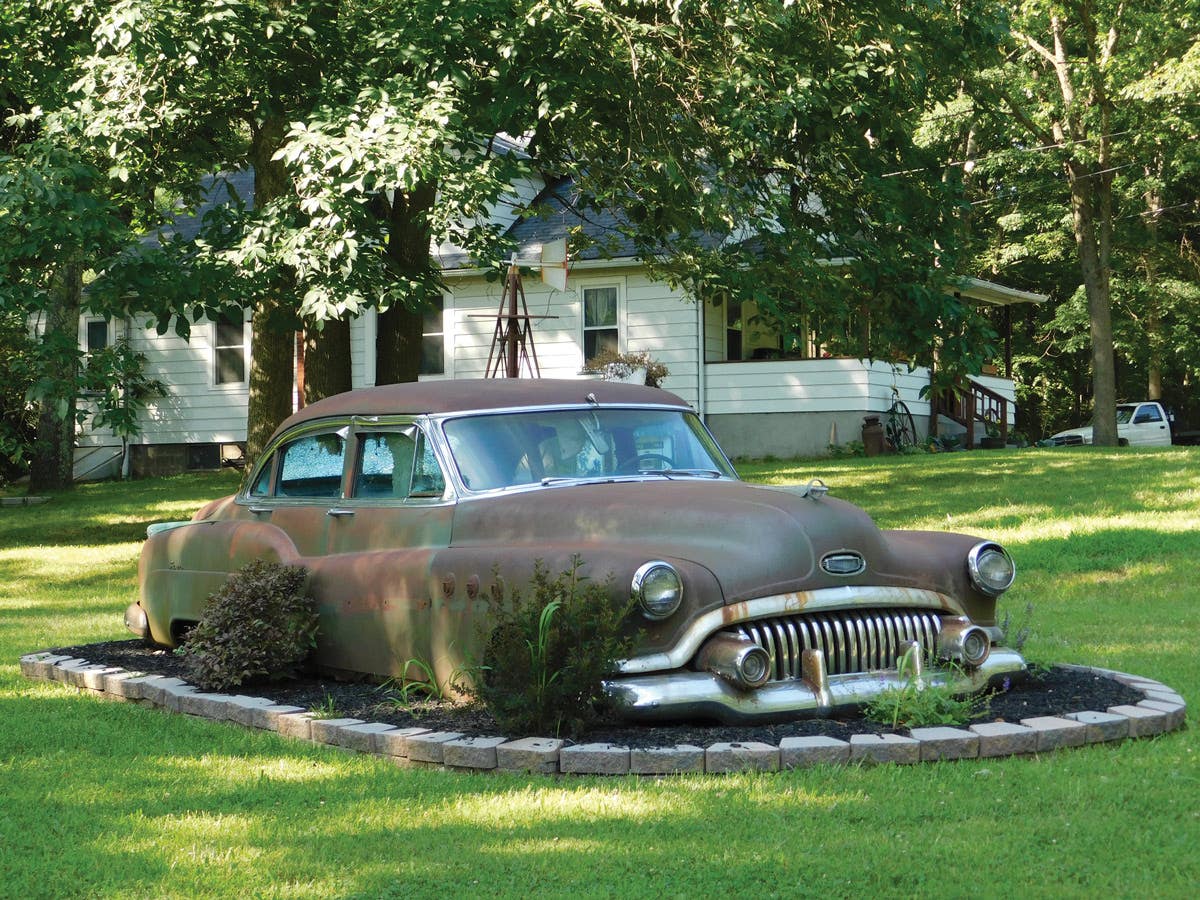1968 Dodge Coronet R/T
The Coronet “B-body” was one of the Dodge “Rebellion” muscle cars — a squarish intermediate with the classic “factory hot rod” formula. When it was introduced in 1965, ads teased “Why not drop a Hemi in the new Coronet 500?” but most hot Coronets on the streets ran with big “wedge” V-8s. The Race Hemi was a possibility, but not best for boulevard-prowling muscle cars.
The restyled 1966 Coronet had crisp, well-defined character lines. The upscale 500 had sporty bucket seats with vinyl or vinyl-and-fabric upholstery. The 426-cid, 425-hp dual-quad Street Hemi was offered. Displacement and power-wise, it matched the race Hemi, but it used hydraulic lifters and a 10.5:1 compression ratio. It was the most powerful production engine of its day.
The Charger was Dodge’s answer to the fastback craze. It was a Coronet from the waist down, and this big, wide body gave it a “flat” look far different from a Mustang 2+2.
1966 Dodge Charger
Dodge called its Charger a “Sports Sedan.” It was aimed at young-at-heart dads able to sell their better half on buying it as a “station wagon.” V-8s included a base 318-cid, 230-hp job or the one-step-up 361-cid, 265-hp option (both two-barrels). Once you got to the 383, you were talking “muscle.” A nicely outfitted 383 Charger with automatic went out the door a tad over $3,100. Production of 1966 Chargers hit 37,300, including just 468 Hemis.
Many “street” muscle cars were weekend dragsters. Starting in 1967, Dodge added a Coronet R/T (for “road and track”) to emphasize this street-and-strip nature. Motor Trend called the R/T “a Dodge with a set of mag wheels, wide oval tires and a bumblebee stripe on its rear end.” A 375-hp 440 Magnum V-8 was standard.
Dodge wanted the 1967 Charger to reflect the company’s racing image. Standard was a 318-cid, 230-hp V-8 good for 0-to-60 mph in 10.9 seconds. Next came a 383-cid, 326-hp big-block that took the Charger from 0-to-60 mph in 8.9 seconds and down the quarter mile in 16.5 seconds at 86.4 mph. There was also the 440-cid, 375-hp V-8 good for 0 to 60 in 8 seconds and a 15.5-second quarter-mile at 93 mph. Top dog was the 426-cid, 425-hp Hemi. It went 0-to-60 mph in 7.6 seconds and did the quarter in 14.4 seconds at 100 mph!
1967 Dodge Coronet R/T
The ’67 Chargers were much rarer than 1966 versions. Only 15,788 were built. This included 118 with a Hemi, of which half were four-speeds. If you’re considering buying a 1967 Hemi Charger today, you might appreciate knowing that it gets 11.7 mpg in city driving and about 14.4 mpg on the open highway. Don’t tell that to the people who set CAFE standards. One of them might have a heart attack!
The Coronet was completely reinvented in 1968. Two R/Ts were available, a $3,353 hardtop and a $3,613 convertible. R/T equipment included bucket seats, dual exhausts, stiff suspension, heavy-duty brakes and more. TorqueFlite was standard. Bumblebee stripes or side stripes were provided. Coronet R/Ts used the Coronet 500 interior and a “power bulge” hood with simulated air vents.
The standard 440-cid Magnum V-8 was the same as the 1967 version. Horsepower (375 at 4,600 rpm) remained unchanged. High-performance tires and bucket seats were standard. Options included a limited-slip differential, custom wheels, front disc brakes and a console. The optional $605 Street Hemi was ordered for 94 Coronet R/Ts with four-speeds and 136 with TorqueFlite. Hemi cars came with a special heavy-duty suspension, but no A/C.
1969 Charger R/T
New for 1968 was a bargain-basement Super Bee based on the Coronet 440 coupe. It included the 383-cid, 335-hp V-8, a heavy-duty four-speed with a Hurst “Competition-Plus” shifter, dual exhausts, F40 x 14 tires and a heavy-duty suspension at a low package price. You couldn’t get a vinyl top, but $712 got you a Hemi. Only 166 Hemi Super Bees were made. The Super Bee — with carpets, pleated vinyl seats and door panels and a Charger dash — was fancier than a Road Runner. The wheel lips and rear panel had bright accents.
The all-new 1968 Chargers gave up the wide “jumping-ramp” roof and adopted the late-1960s “Coke bottle” shape to a smoother, rounded fastback body. The R/T muscle version included an integral rear deck lid spoiler and competition-type gas filler. Chargers retained a 117-inch wheelbase, but the rear track was widened nearly an inch. The $3,480 R/T (TorqueFlite was standard) could move from 0-to-60 mph in 6.5 seconds and down a drag strip in 15 seconds at 93 mph. This was the only ’68 Charger model that could be fitted with a Hemi. The engine option cost $605 and only 475 such cars were put together.
In 1969, the Coronet R/T soldiered on as the Coronet series muscle car. Content included the Magnum 440-cid V-8, TorqueFlite and bumblebee stripes. Simulated air scoops located on the rear fenders, just ahead of the rear wheels, were optional. A “six-pack” carburetor setup was the big news for the ’69 Coronet R/T at mid year. The six-pack R/T did a 105.14-mph 13.65-second quarter-mile run. Its 0-to-60 time was 6.6 seconds. Also available was a Ramcharger fresh-air induction system (standard on Hemis) with twin air scoops that fed cold air into a fiberglass plenum bolted under the hood. Model-year production totaled 7,238 hardtops and convertibles combined. Hemis went in 97 two-door hardtops (58 with a four-speed) and 10 ragtops (four with a four-speed).
A two-door hardtop with a $3,138 base price joined the Coronet Super Bee line in 1969. The Sport Coupe returned at $3,076. There were few changes in appearance or standard equipment. The new 390-hp “six-pack” performance option was available at mid year. It included a black fiberglass hood that locked in place with four chrome pins and was entirely removable for engine access. Also available was the new Ramcharger cold-air induction system. A total of 27,800 Super Bees were built, including 166 Hemi cars — 92 with four-speeds.
1969 Dodge Super Bee
The 1969 Charger didn’t change much. As Motor Trend magazine put it, “That brute Charger styling, that symbol of masculine virility, was still intact.” The 1969 grille was divided into two sections and the taillights were modified a bit. However, the fastback Dodge was basically the same good-looking beast as before on the outside. The inside also had only a few changes such as a large-faced tach and gauges done in white on black to make them stand out more.
The R/T was the high-performance version of the Charger, yet a new Charger 500 was issued as a special limited-production model based on a prototype race car. Dodge said it was offered specifically for high-performance racing tracks and available only to qualified race drivers.
The Charger 500’s body modifications were the workmanship of Creative Industries, a Detroit aftermarket firm. A minimum of 500 such cars had to be sold to the public to authorize the changes and make the Charger legal for racing under NASCAR rules. The Charger 500 model designation was based on that number. Only 392 Charger 500s were actually built, perhaps because efforts were shifted to the more aerodynamic 1969 Charger Daytona. But that’s another story for another time.
MORE ON MUSCLE CARS
1. Mopar, The Performance Years by Martyn L. Shorr
2. Sweeeet, Limited Edition Print by David Snyder







